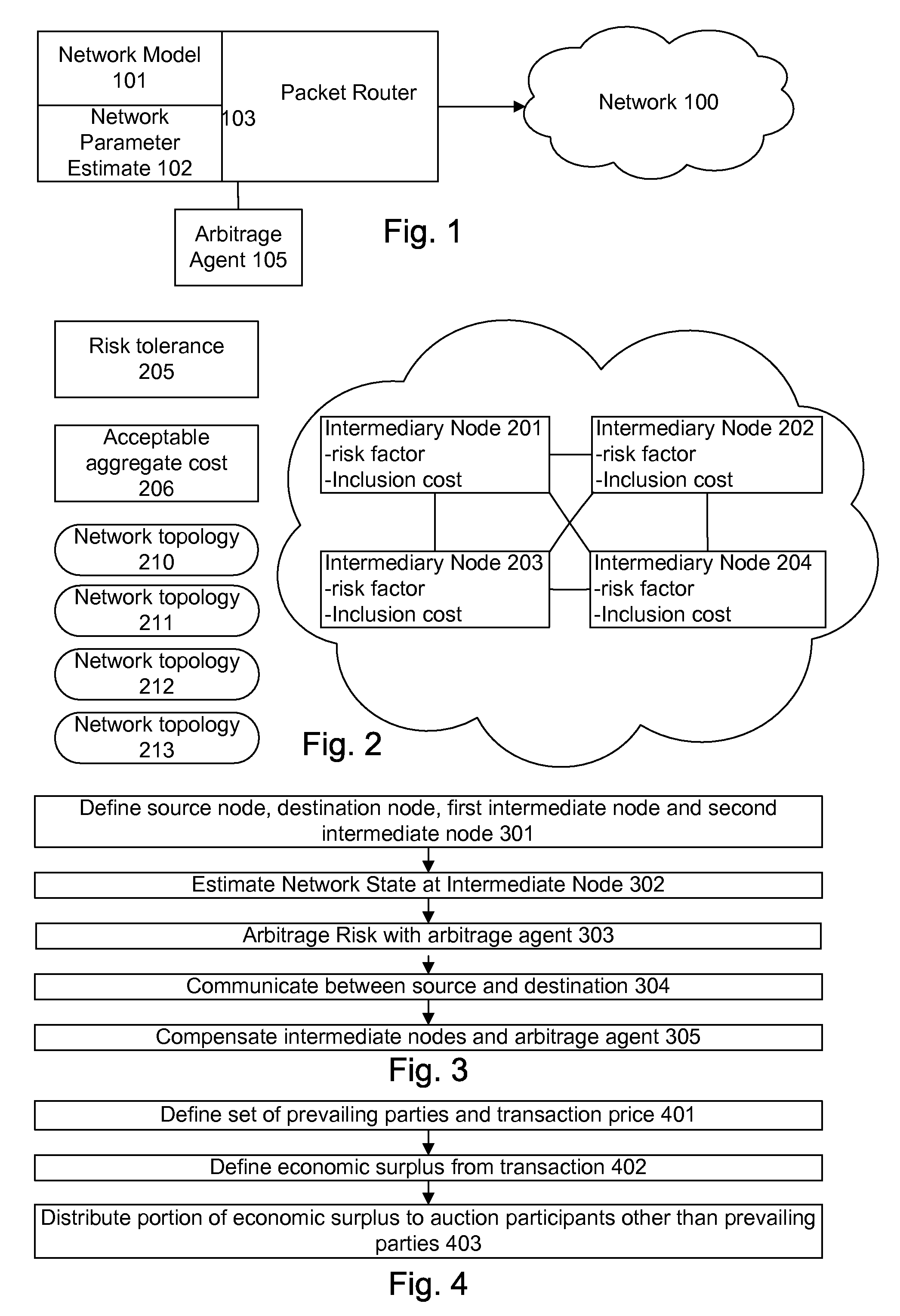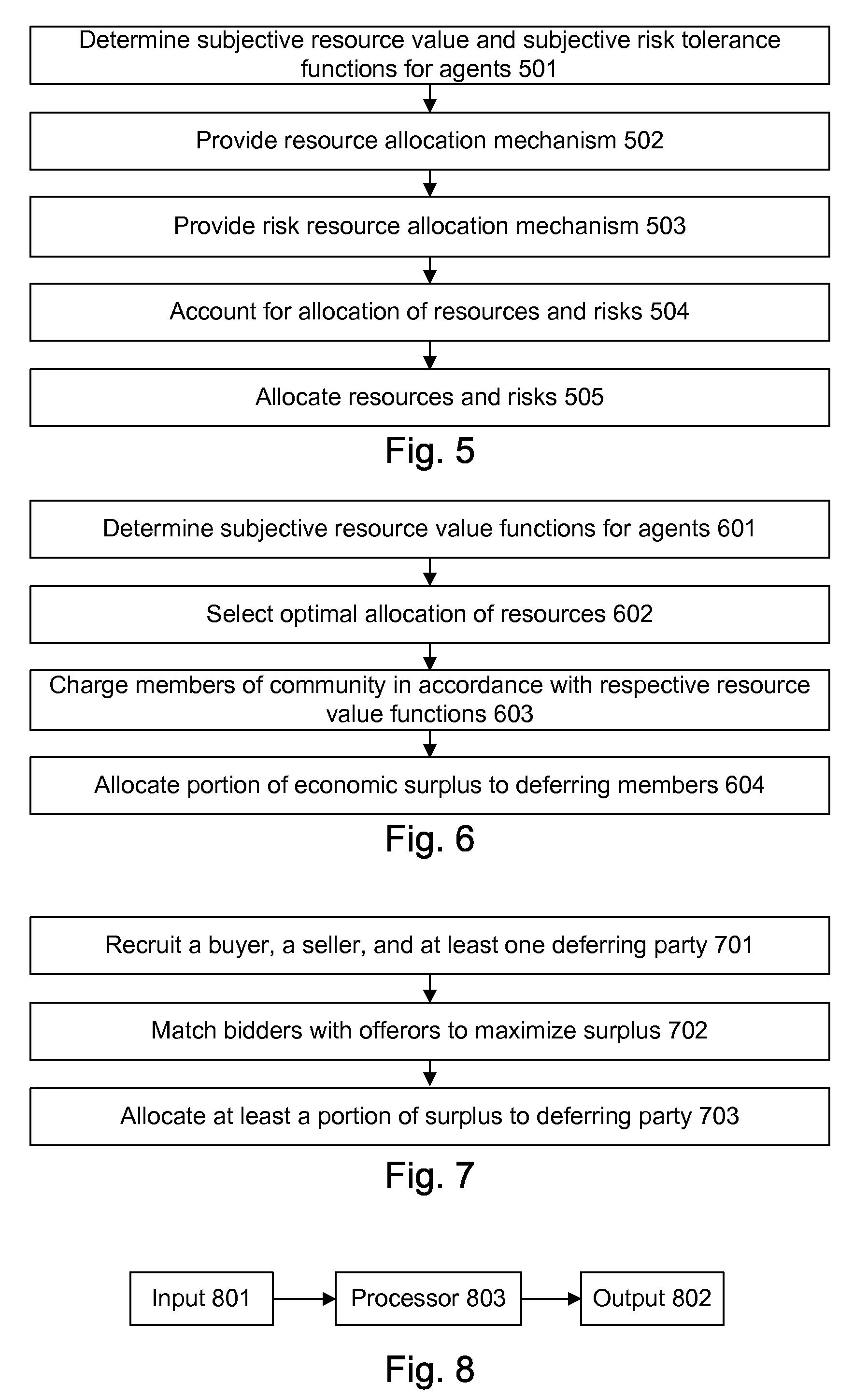Multifactorial Optimization System and Method
a multi-factorial economic and optimization technology, applied in the field of multi-factorial economic optimization, can solve the problems of imposing an element of risk, and reducing the ability of parties to predict future pricing and revenues, so as to maximize the aggregate economic surplus of the community, encourage the recruitment of entities, and maximize the effect of surplus
- Summary
- Abstract
- Description
- Claims
- Application Information
AI Technical Summary
Benefits of technology
Problems solved by technology
Method used
Image
Examples
first embodiment
[0176]In a typical auction, each player is treated fairly; that is, the same rules apply to each player, and therefore a single economy describes the process. The fair auction therefore poses challenges for an inherently hierarchal set of users, such as a military organization, where rank is accompanied by privilege. The net result, however, is a decided apparent disadvantage to lower ranking agents, at least when viewed in light of constricted self-interest. The issues that arise are similar to the relating to “altruism”, although not identical, and thus the game theoretic analysis of altruistic behavior may be imported for consideration, as appropriate.
[0177]In a mobile ad hoc communications network, a real issue is user defection or non-compliance. For example, where a cost is imposed on a user for participating in the ad hoc network, e.g., battery power consumption in a mesh radio network, if the anticipated benefit does not exceed the cost, the user will simply turn off or disa...
second embodiment
[0217]Multihop Ad Hoc Networks require cooperation of nodes which are relatively disinterested in the content being conveyed. Typically, such disinterested intermediaries incur a cost for participation, for example, power consumption or opportunity cost. Economic incentives may be used to promote cooperation of disinterested intermediaries. An economic optimization may be achieved using a market price-finding process, such as an auction. In many scenarios, the desire for the fairness of an auction is tempered by other concerns, i.e., there are constraints on the optimization which influence price and parties of a transaction. For example, in military communication systems, rank may be deemed an important factor in access to, and control over, the communications medium. A simple process of rank-based preemption, without regard for subjective or objective importance, will result in an inefficient economic distortion. In order to normalize the application of rank, one is presented with...
PUM
 Login to View More
Login to View More Abstract
Description
Claims
Application Information
 Login to View More
Login to View More - R&D
- Intellectual Property
- Life Sciences
- Materials
- Tech Scout
- Unparalleled Data Quality
- Higher Quality Content
- 60% Fewer Hallucinations
Browse by: Latest US Patents, China's latest patents, Technical Efficacy Thesaurus, Application Domain, Technology Topic, Popular Technical Reports.
© 2025 PatSnap. All rights reserved.Legal|Privacy policy|Modern Slavery Act Transparency Statement|Sitemap|About US| Contact US: help@patsnap.com



